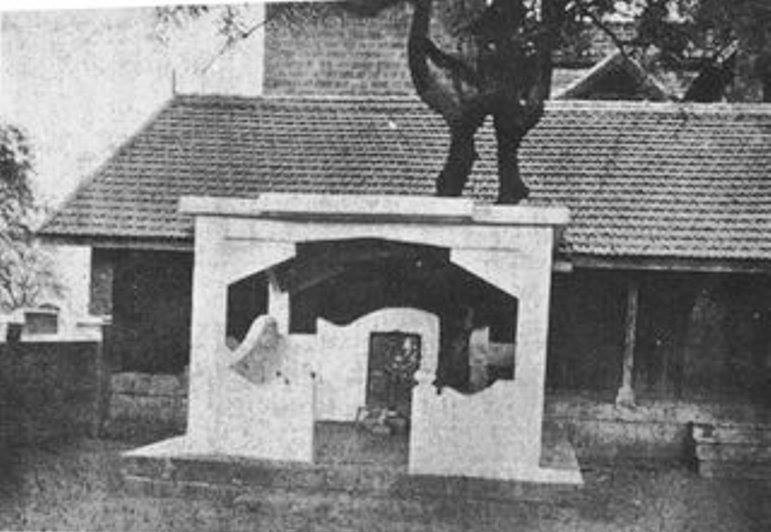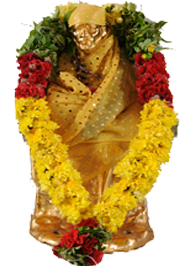Lakshmibai Shinde
Lakshmibai hailed from a village near Yeola. She was married to Tukaram Patil at the age of thirteen and came to Shirdi. She had two sons named Tatya and Nana. Lakshmibai’s husband was a Revenue Officer and the British had conferred the title of ‘Mulki Patil’ (village officer) on him. She was widowed at a very young age, so all the responsibilities fell on her young shoulders.
Lakshmibai looked after her children, her farmland and undertook the job of the Mulki Patil as well. Meticulously, age collected taxes and deposited them at the office at the Ragoba Dada Wada (name of a building). The British were very pleased with her dedication and gave her a stipend. Lakshmibai was a well-to-do woman and she owned her own home.
Lakshmibai used to work in the Masjid day and night. Except Bhagat Mahalsapathy, Tatya and Lakshmibai, no one was allowed to step in the Masjid at night. Once while Baba was sitting in the Masjid with Tatya in the evening, Lakshmibai came and saluted Baba. The latter said to her, “Oh Lakshmibai, I am very hungry.” Off she went saying, “Baba, wait a bit, I will return immediately with bread.”
She did return with bread and vegetables and placed the same before Baba. He took it up and gave it to a dog. Lakshmibai then asked, “What is this, Baba, I ran in haste, prepared bread with my own hands for You and You threw it to a dog without eating a morsel of it; You gave me trouble unnecessarily.” Baba replied, “Why do you grieve for nothing? The appeasement of the dog’s hunger is the same as Mine. The dog has got a soul; the creatures may be different, but the hunger of all is the same, though some speak and others are dumb. Know for certain, that he who feeds the hungry, really serves Me with food. Regard this as an axiomatic truth.”
This is but an ordinary incident, but Baba thereby taught a great spiritual message and showed it in practical application in daily life. From then on, Lakshmibai began to offer Baba bread and milk everyday, with love and devotion. Baba accepted and ate it appreciatively. He took a part of this and sent the remaining to Radha Krishna Mai as prasad.
Lakshmibai’s house is on the left side of the lane that goes from the Dwarakamai to Tajin Khan’s Darga.
Story of the nine coins
On Vijayadashmi day of 1918 before Baba took Mahasamadhi, he put His hand in His pocket and gave her first Rs. 5 and then Rs. 4 totalling Rs. 9 indicative of the nine types of Bhakti (namely: Shravana, Kirtana, Smarana, Charana Sevana, Archana, Vandana, Dasya, Sakhya and Atma Nivedana. (Sai Satcharita Chapters 21 and 42).
Another interpretation of the 9 coins could be as follows: the number 5 could be the ‘Panch Indriyas’. They are the “Karmendriyas” and there are 5 “Jnanendriyas”. These Indriyas are the cause of joy and sorrow. The 4 rupees could also mean the “Ego Complex” that is Manas, Buddhi, Aham and Chitta. If the above mentioned are placed in Baba’s hands or laid at His feet, It is “Total Sharanagati” or “Total Surrender”. Baba through Lakshmibai taught us to totally surrender ourselves to Him.
Lakshmibai’s Samadhi
Lakshmibai Shinde took samadhi on 2nd June 1963. She died peacefully after Shej Aarti. Prior to her demise, she asked her relatives to read aloud Chapter 42 of the holy Sai Satcharitra. Her samadhi is in front of her house and there is a small shrine where Lakshmibai’s statue is installed in front of which are the nine coins enclosed in a glass box.
Lakshmibai Shinde’s descendants are still living in that house.
Dr. Vinny emphasises how this task changed Hemadpant as a person. Vinny Ma also gives us details about the original Satcharita written in poem form in Marathi, and how translated and editions versions have not been able to do justice to Baba’s words that He uttered. She hopes one day, someone will accurately translate Baba’s words from Marathi to other languages and bring out the essence of what He spoke.



 Donate Now
Donate Now  Online Services
Online Services
Find us on Social Media